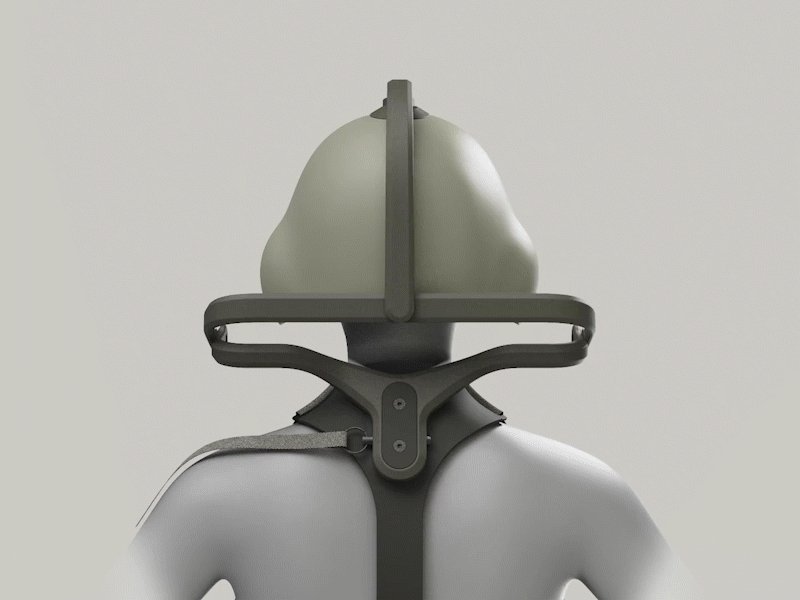HSE
Defense Research and Devlopment Canada (DRDC) has been researching the prevalence of neck pain present in their rotary-wing aircrew since the 2004 survey on NVG-induced neck strain. In response, Brash developed a novel Helmet Support Exoskeleton (HSE) which can unload headgear induced forces acting on the neck.
Industrial Design
Product Design
Apparel Design
Ergonomics
Usability
CMF
Prototyping and Model Making
Engineering
Mechanical Design
Kinematic and Dynamic Modeling
Prototyping and Model Making
Lab Testing

Operational Requirements
A key challenge in the design process was to address operational concerns regarding adjustability and comfort of the HSE for different users, quick-release for emergency egress and minimizing interference with the cockpit environment. Large scale, in-house 3D printers were utilized to create several full scale models to perform quick iterations and user testings.

Kinematic Matching
The HSE consists of a three-linkage passive exoskeleton that connects to the user’s helmet and is attached to the user via a torso harness. The exoskeleton allows for free motion of the neck and head while transferring helmet loads to the torso via the harness, and as a result, unloads the user’s neck.





